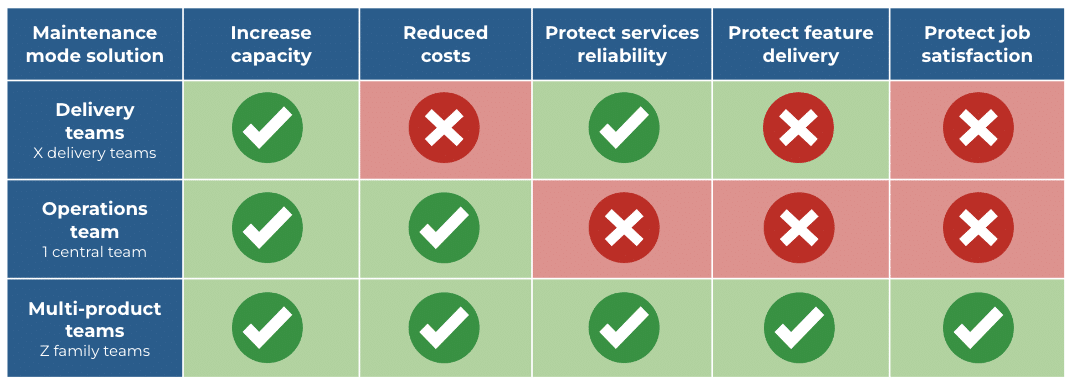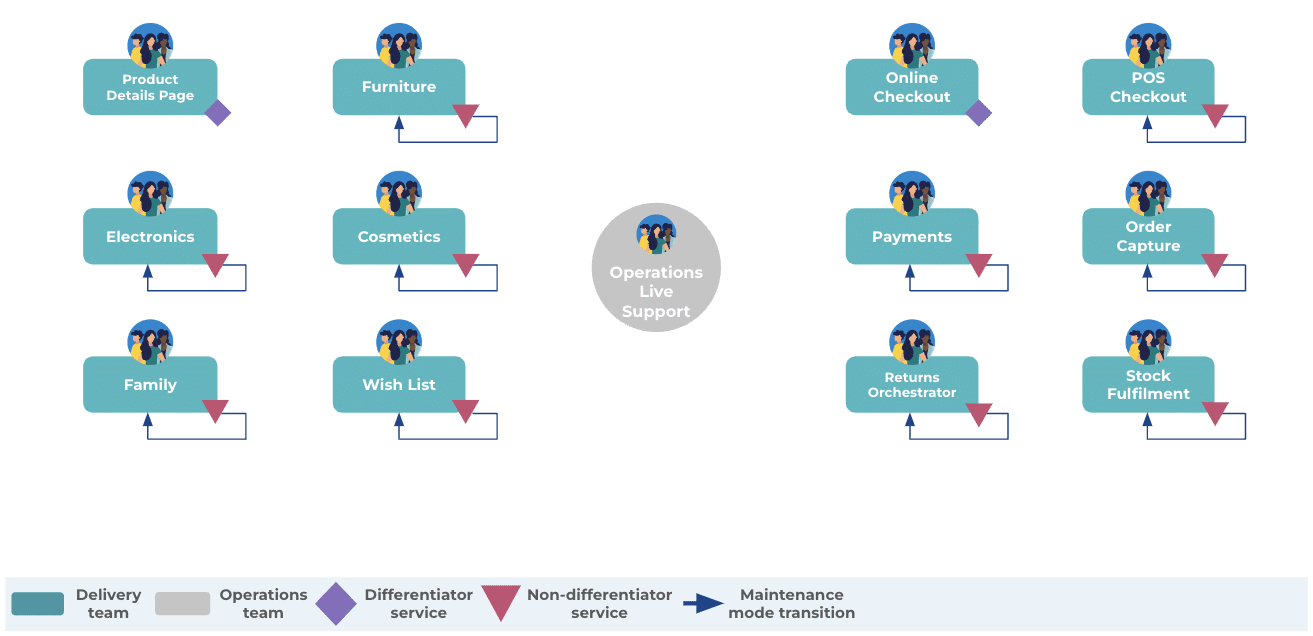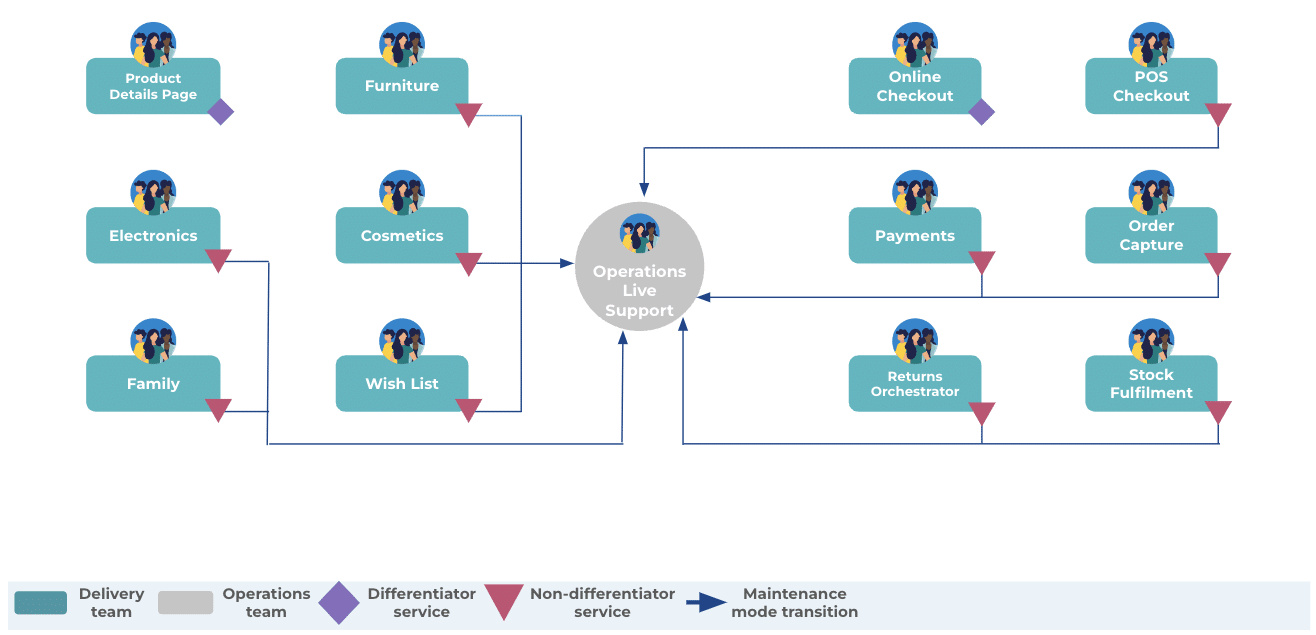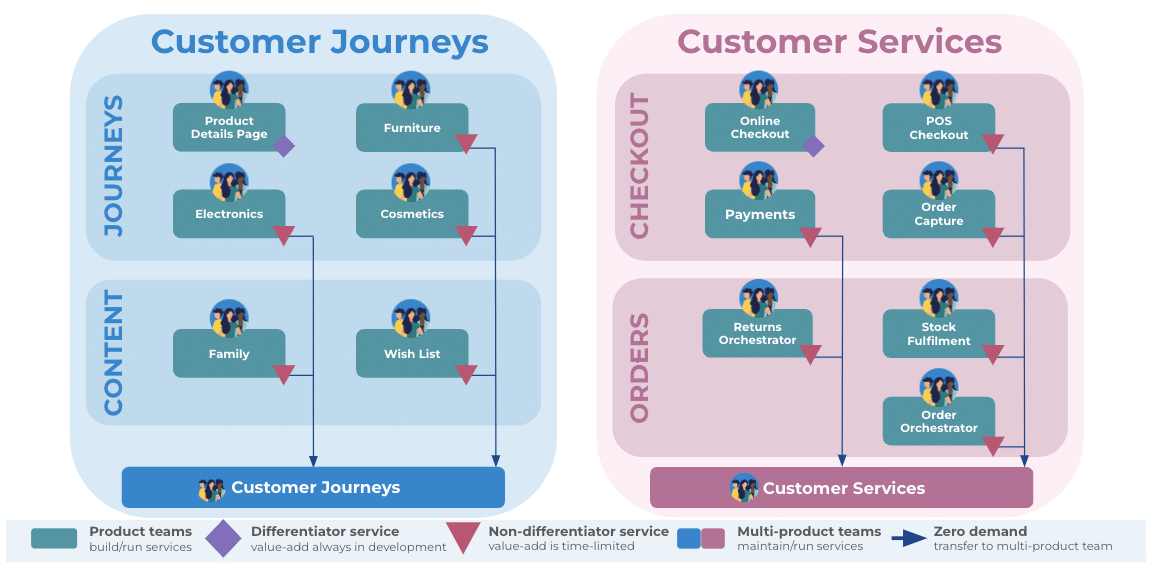Why developers doing maintenance mode is best for your business
I speak with customers and consultants across the Equal Experts network, to help our customers solve scaling problems and achieve business agility. One of our customers recently asked me ‘how do we do maintenance mode in a DevSecOps world’ and our answer of ‘create multi-product teams’ deserves an explanation.
Maintenance mode is when demand for change declines to zero for live digital services and data pipelines, and the rate of maintenance tasks supersedes planned value-adding work. Working on maintenance tasks alone (capacity fixes, library upgrades, security fixes) is also known as ‘keeping the lights on’, or ‘BAU support’.
Zero demand doesn’t mean zero user needs, zero planned features, or zero faults. Software can’t entirely satisfy users, can’t be finished, and can’t be fault-free. Zero demand really means zero funding for more planned features.
Zero demand services are put into maintenance mode so teams can be reassigned to increase capacity for new propositions, or resized/retired to reduce costs. But those outcomes aren’t enough. You also need to protect live services reliability, staff job satisfaction, and future feature delivery. No funding today doesn’t mean giving up on a better tomorrow.
Implementing an effective ownership model for zero demand services is difficult. At Equal Experts we call it the Maintenance Mode Problem. You can spot it by listening out for people saying ‘we need to increase capacity’ or ‘we need to reduce costs’. Or you can measure unplanned work rate across your teams, and look for a decline in planned features.
Here’s a comparison of maintenance mode solutions, and their impacts on those outcomes.

Solution #1 – delivery teams
Delivery teams maintain zero demand services in the background, and build new services in the foreground, while an operations team does live support for everyone. Here’s an example from a composite American retailer. 11 of 13 teams are building non-differentiators, and they maintain their live services themselves when zero demand is reached.

This solution has its benefits. It creates capacity for teams to start new propositions. The prior level of services reliability can be preserved, because teams have a low cognitive load, plus the technical skills and domain knowledge to complete maintenance tasks.
Future feature delivery is difficult, because delivery teams usually have separate business owners for their background and foreground services, so prioritization is difficult. And there’s little intrinsic job satisfaction, because teams don’t own outcomes. But the big disadvantage is you can’t easily resize or retire teams. That’s why our customers often believe dedicated teams aren’t value for money with zero demand services. This solution usually ends as soon as cost pressures begin.
Solution #2 – operations team
This is the traditional maintenance mode solution. Delivery teams transition their zero demand services into the operations team, who do maintenance tasks and live support for everyone. Here’s our American retailer again, with 11 teams reassigned, resized, and/or retired when their non-differentiators reach zero demand.

This solution is popular because it increases team capacity and reduces costs. In addition, the operations team can be outsourced for further cost savings. However, there are significant disadvantages:
- Live services reliability is weakened. Maintenance tasks are completed slower and to a lower standard than before. An operations analyst has a high cognitive load, with tasks for tens or hundreds of live services, because there’s no limit for an operations team. They might also lack the technical skills and domain knowledge for some tasks, like updating production code and tests after a library upgrade
- Future feature delivery is much slower. When planned features are required, they’re prioritized and implemented at a much slower rate than before. Live services maintained by an operations team have multiple business owners, so prioritization is really painful. Missing skills and domain knowledge also have an impact here
- Job satisfaction is damaged. There’s little intrinsic motivation, because delivery teams feel they’re in a never-ending feature factory, and operations analysts feel they’re in a never-ending dumping ground
A car repair company has its operations team running ePOS software in maintenance mode. Some team members lack the technical skills for library upgrades, and it delays performance improvements reaching payment tills. When new regulations are announced, there’s a reverse service transition into a temporary delivery team. When the functional changes are complete, there’s another transition back into the same operations team. It’s a time-consuming, costly process.
Solution #3 – multi-product teams
Our recommended maintenance mode solution is multi-product teams. It’s a logical extension to our preferred You Build It You Run It operating model, and it follows the same principle of outcome-oriented, empowered product teams. All zero demand services in a product family are transferred from their product teams into a multi-product team, staffed by developers. Here’s the American retailer with multi-product teams in two families of related domains.

Multi-product teams allow capacity to be increased and team costs to be decreased, as one team per product family does all the maintenance work. The You Build It You Run It operating model ensures all teams have the necessary technical skills, operational incentives, and intrinsic motivation to protect live services reliability and future feature delivery as is. Cognitive load for a multi-product team is limited to product family size, and job satisfaction is boosted by accountability for user outcomes.
Guardrails are necessary, to counter any dumping ground preconceptions lurking in your organization. We suggest:
- Define zero demand. Describe it as a non-differentiating service with 3+ months of live user traffic, where the product manager has declared no more funding exists
- Create identity and purpose. Give a multi-product team the same name as its product family, to emphasize the team mission and focus on outcomes over outputs
- Document transfer criteria. Ensure the same criteria are used for transferring a live service between two product teams, or a product team and a multi-product team
Conclusion
In a DevSecOps world, you still need a maintenance mode solution. Your non-differentiating digital services and data pipelines can reach zero demand, and that’s OK. Just avoid the traditional maintenance mode solution of using your operations team. It’ll harm live services reliability, future feature delivery, and job satisfaction. Instead, create multi-product teams tied to product verticals, and ensure your developers are empowered to protect user outcomes.
